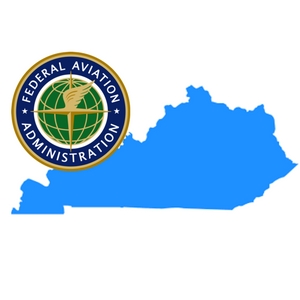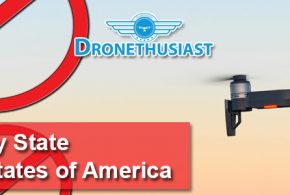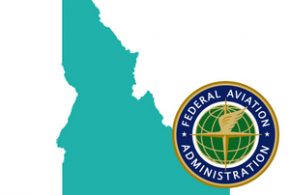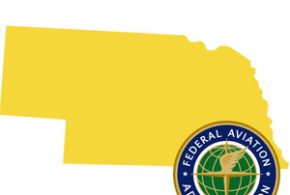Drone Laws in Kentucky

Paying attention to everything the FAA has put forth since their rules and regulations were initially put into full effect is crucial for all drone fliers. Although, do you know the laws and regulations related to drones in your state, as well?
Flying Over Kentucky
Though it hasn’t officially open yet, drone users in Henderson, Kentucky can soon look forward to the up and coming designated drone park, which will be built as an obstacle course on Kentucky 351 at the Sandy Lee Watkins Park. The obstacle course will be done in a joint project with the Henderson Airplane R/C Club Inc.
At this time of writing, there are a lot of regulations and bills floating around about using a drone in Kentucky, as well as in pockets among the entire state, so we can’t be completely sure where you can legally fly your drone there right now.
Although, CVG has recently partnered up with AirMap, an application that informs drone users when and where it’s safe and legal to fly their drone. With this in mind, and because of the number of upcoming legal bills and regulations floating around, we recommend that you regularly check AirMap for quick updates and to see where you can legally fly at any given time.

The Registering Process in Kentucky
The Federal Aviation Administration (FAA) requires that all Small Unmanned Aircraft Systems (UAS) owners follow strict regulations and laws. You will need to file your name, home address and your email address as a start.

From there, you will receive a Certificate of Aircraft Registration and Proof of Ownership. These will include an identification number for your aircraft. You must have this number displayed on your drone at all times. The number will be valid for up to 3 years.
All aircraft that weighs more than 0.55 pounds, or 250 grams, and less than 55 pounds, or 25 kilograms, must be registered. This also includes any added payloads, such as an onboard camera.
You must be at least 13-years-old in order to register and, effective December 21st, 2015, all newly purchased or made drones must be registered before their first flight. You are able to register through a paper-based process, but you can also do so online by clicking here.
Proximity to Airports in Kentucky

As a general rule of thumb, and in accordance with the law from the FAA, you may not fly within a 5-mile radius of any airport. In 2012 the FAA enacted the Modernization and Reauthorization Act which requires hobbyist drone operators, meaning residential, to contact air traffic control and/or airport management if they are operating within a 5-mile radius of any local airport.
This is enacted nationwide, not only in Kentucky, under Part 101 of the Act, being Special Rule for Model Aircraft, to ensure that drone operations under unsafe conditions are disapproved before the drone can be launched.
Regardless of the local airport you will be flying near, and possibly breaching airspace, you will need to contact either the airport air traffic control tower or the airport operator.
You will need to establish an agreed-upon operating procedure with airport air traffic or the airport operator and answer a couple of questions. For example, questions relating to how long you are going to be flying for.
Unique Drone Laws in Kentucky
At this time of writing, all of the legal information listed below is deemed as accurate as possible and fully in effect.
18 RS HB 22/SCS 1
Be it enacted by the General Assembly of the Commonwealth of Kentucky:
SECTION 1. A NEW SECTION OF KRS CHAPTER 500 IS CREATED TO READ AS FOLLOWS:
1) Except for an unmanned aircraft systems operated by the United States Army, Navy, Marine Corps, Air Force, or Coast Guard, or a reserve component thereof, or by the Army National Guard or Air National Guard, unmanned aircraft systems may not be equipped with a lethal payload.
2) Any business entity doing business lawfully within this state may use an unmanned aircraft system for business purposes, in compliance with 14 C.F.R. pt. 107.
3) Any recreational user may operate an unmanned aircraft system within this state, in compliance with 14. C.F.R. pt. 101.
4) Any institution of higher education, or school district, may use an unmanned aircraft system for educational, research, or testing purposes.
5) No law enforcement agency, or agent thereof, shall use an unmanned aircraft system to conduct a search unless authorized under the Fourth Amendment to the United States Constitution and Section 10 of the Kentucky Constitution. If the search is conducted pursuant to a warrant, the warrant shall specifically authorize the use of an unmanned aircraft system.
6) Except as limited by subsection (5) of this section, any government agency, including a law enforcement agency, may use an unmanned aircraft system for legitimate government purposes.
7) When an unmanned aircraft system is used by law enforcement pursuant to subsections (5) and (6) of this section, it shall be operated in a lawful manner and shall minimize data collection on non-suspects. Disclosure of such data shall be prohibited except by order of a court of competent jurisdiction.
8) No evidence obtained or collected as the result of the use of an unmanned aircraft system shall be admissible as evidence in any civil, criminal, or administrative proceeding within this state for the purpose of enforcing state or local law, except for:
A) Evidence collected as permitted by subsections (2) to (6) of this section; or
B) Evidence which is offered against the owner or operator of an unmanned aircraft system to show misconduct.
9) No law enforcement agency shall be required to operate unmanned aircraft systems.
10) Operation of an unmanned aircraft system in violation of subsection (2) or (3) of this section shall be a violation for the first offense and a Class B misdemeanor for the second or subsequent offense.
11) This section may be cited as the “Citizen’s Freedom from Unwarranted Surveillance Act”.
SECTION 2. A NEW SECTION OF KRS CHAPTER 501 IS CREATED TO READ AS FOLLOWS:
A person is guilty of an offense committed with the aid of an unmanned aircraft system if the unmanned aircraft system is under his or her control and the conduct would have given rise to criminal liability for the offense if performed directly by the person, unless the conduct consists solely of flying the unmanned aircraft system through navigable airspace in the normal course of operation of a legally registered unmanned aircraft system.
SECTION 3. A NEW SECTION OF KRS CHAPTER 525 IS CREATED TO READ AS FOLLOWS:
1) As used in this section, “emergency responder” means state or local law enforcement personnel, fire department personnel, corrections officers, and emergency medical personnel and those contracted for official use by emergency responders.
2) No person shall intentionally obstruct or disrupt an emergency responder from performing his or her official duties.
Obstructing an emergency responder is a violation for a first offense, and a Class B misdemeanor for a second or subsequent offence.
Section 4. KRS 446.010 is amended to read as follows:
56) “Cooperative,” except in KRS Chapter 272, includes a limited cooperative association; and
57) “Unmanned aircraft system” means an aircraft that is operated without the possibility of direct human interaction from within or on the aircraft and includes everything that is on board or otherwise attached to the aircraft and all associated elements, including communication links and the components that control the small unmanned aircraft, that are required for the safe and efficient operation of the unmanned aircraft in the national airspace system.
HB 540 17 RS
AN ACT relating to aviation safety.
Be it enacted by the General Assembly of the Commonwealth of Kentucky:
SECTION 1. A NEW SECTION OF KRS CHAPTER 183 IS CREATED TO READ AS FOLLOWS:
A commercial airport may prepare an unmanned aircraft facility map. In preparing the map, a commercial airport shall consult with the Federal Aviation Administration air traffic control tower at the airport.
Any unmanned aircraft facility map developed by a commercial airport shall be filed with the secretary of the airport board and shall be prominently displayed on the airport’s Web site.
An unmanned aircraft facility map shall not extend beyond the approach surface areas specifically described in 14 C.F.R. sec. 77.29(d), and as published in the official airport master plan record.
If the Federal Aviation Administration creates and makes available a map for the commercial airport that restricts the areas where it is unsafe to operate an unmanned aircraft in the areas described in 14 C.F.R. sec. 77.19(d), that map shall be the unmanned aircraft facility map of the commercial airport.
SECTION 2. A NEW SECTION OF KRS CHAPTER 183 IS CREATED TO READ AS FOLLOWS:
An operator of an unmanned aircraft or a direct supervisor of an operator of an unmanned aircraft, if that direct supervisor holds a remote pilot certificate under 14 C.F.R. Part 107, shall not operate or allow an unmanned aircraft to operate:
In a manner that allows an incursion of an unmanned aircraft into areas prohibited for the operation, taking off, and landing of an unmanned aircraft as designated by a commercial airport’s unmanned aircraft facility.
In a reckless manner so as to create a risk of serious physical injury to another or a risk of damage to property.
The provisions of this section shall not apply to an operator of an unmanned aircraft for a commercial purpose in compliance with Federal Aviation Administration regulations, authorizations, or exemptions.
Section 3. KRS 183.011 is amended to read as follows:
“Commercial airport” means an airport certified by the Federal Aviation Administration in accordance with 14 C.F.R. Part 139;
“Operate”, as pertains to an unmanned aircraft, means the actions taken by an operator of an unmanned aircraft. “Operate” refers only to the actions of an operator on the ground and is not intended to regulate an unmanned aircraft flying in navigable airspace;
“Operator” means a person operating or flying an unmanned aircraft;
“Unmanned aircraft” means an aircraft operated without the possibility of direct human intervention from within or on the aircraft; and
“Unmanned aircraft facility map” means a map that may be developed by a commercial airport to display the airport facility’s airspace overlaid with latitude and longitude rectangular gridlines, or any other commercially available system, that reflects the areas where it is unsafe to operate an unmanned aircraft without authorization by the commercial airport operator on property owned by a commercial airport and in specific areas consistent with obstruction to navigation under 14 C.F.R. Part 77.
Section 4. KRS 183.990 is amended to read as follows:
Any person violating any of the provisions of this chapter with respect to operation of aircraft, or violating the provisions of any rule, regulation, or ordinance adopted under KRS 183.133(6), shall be fined not less than ten dollars ($10) nor more than one hundred dollars ($100) or imprisoned not more than ninety (90) days or both.
Each violation of the statutes pertaining to the state airport zoning commission or of any order, rule, or regulation promulgated pursuant thereto shall be punishable by a fine of not less than one hundred dollars ($100) nor more than five hundred dollars ($500) or imprisonment for not more than thirty (3) days or both and each day a violation continues to exist shall constitute a separate offense.
Any person who violates the provisions of KRS 183.886 shall be fined not less than fifty dollars ($50) nor more than one thousand dollars ($1,000) or shall be imprisoned in the county jail for not less than ten (10) nor more than ninety (9) days, or both.
Any person who violates the provisions of KRS 183.887(2) or Section 2 of this Act shall be guilty of:
A Class A misdemeanor; or
A Class D felony, if the violation causes a significant change of course or a serious disruptions to the safe travel of the aircraft that threatens the physical safety of the passengers and crew of the aircraft.
Other Legal Issues With Drones in Kentucky
At this time of writing, there are currently a number of bills in circulation within the state of Kentucky surrounding drones.
HB 375 16 RS BR 1171
AN ACT relating to unmanned aerial vehicles.
Be it enacted by the General Assembly of the Commonwealth of Kentucky:
SECTION 1. A NEW SECTION OF KRS CHAPTER 525 IS CREATED TO READ AS FOLLOWS:
A person shall not weaponsize an unmanned aerial vehicle or operate a weaponized unmanned aerial vehicle.
Except as otherwise provided in subsection (3) of this section, violation of subsection (1) of this section is a Class D felony.
A person who weaponizes an unmanned aerial vehicle in violation of subsection (1) of this section and who discharges the weapon is guilty of a Class C felony.
SECTION 2. A NEW SECTION OF KRS CHAPTER 381 IS CREATED TO READ AS FOLLOWS:
Except as otherwise provided in subsection (2) of this section, a person who owns or lawfully occupies real property in this state may bring an action for trespass against the owner or operator of an unmanned aerial vehicle that is flown at a height of less than two hundred fifty (250) feet over the property if:
The owner or operator of the unmanned aerial vehicle has flown the unmanned aerial vehicle over the property at a height of less than two hundred fifty (250) feet on at least one (1) previous occasion; and
The person who owns or occupies the real property notified the owner or operator of the unmanned aerial vehicle that the person did not authorize the flight. Notice may be given by posting in a conspicuous manner.
A person may not bring an action pursuant to subsection (1) or this section if:
The unmanned aerial vehicle is lawfully in the flight path for landing at an airport, airfield, or runway;
The unmanned aerial vehicle is in the process of taking off or landing;
The unmanned aerial vehicle was under the lawful operation of:
A law enforcement agency in accordance with Section 3 of this Act; or
A public agency in accordance with Section 5 of this Act; or
D) The unmanned aerial vehicle was under the lawful operation of a business licensed in this state or a land surveyor if:
The operator is licensed or otherwise approved to operate the unmanned aerial vehicle by the Federal Aviation Administration:
The unmanned aerial vehicle is being operated within the scope of the lawful activities of the business or surveyor; and
The operation of the unmanned aerial vehicle does not unreasonably interfere with the existing use of the real property.
A plaintiff who prevails in an action for trespass brought pursuant to subsection (1) of this section is entitled to recover treble damages for any injury to the person or the real property as a result of the trespass. In addition to the recovery of damages pursuant to this subsection, a plaintiff may be awarded reasonable attorney’s fees and costs and injunctive relief.
SECTION 3. A NEW SECTION OF KRS CHAPTER 432 IS CREATED TO READ AS FOLLOWS:
Except as otherwise provided in this section, nothing in this section shall be deemed to otherwise prohibit the operation of an unmanned aerial vehicle by a law enforcement agency for any law purpose in this state.
Except as otherwise provided in subsection (3) of this section, a law enforcement agency shall not operate an unmanned aerial vehicle for the purpose of gathering evidence or other information within the curtilage of a residence or at any other location or upon any property in this state at which a person has a reasonable expectation of privacy, unless the law enforcement agency first obtains a warrant from a court of competent jurisdiction authorizing the use of the unmanned aerial vehicle for that purpose. A warrant authorizing the use of an unmanned aerial vehicle shall specify the period for which operation of the unmanned aerial vehicle is authorized. A warrant shall not authorize the use of an unmanned aerial vehicle for a period of more than ten (1) days. Upon motion and a showing of probable cause, a court may renew a warrant after the expiration of the period for which the warrant was initially issued.
A law enforcement agency may operate an unmanned aerial vehicle without obtaining a warrant issued pursuant to subsection (2) of this section:
If the law enforcement agency has probable cause to believe that a person has committed a crime, is committing a crime, or is about to commit a crime, or is about to commit a crime, and exigent circumstances exist that make it unreasonable for the law enforcement agency to obtain a warrant authorizing the use of the unmanned aerial vehicle:
If a person provides written consent to the law enforcement agency authorizing the law enforcement agency to acquire the information about the person or the real or person property of the person. The written consent shall specify the information to be gathered and the time, place, and manner in which the information is to be gathered by the law enforcement agency:
For the purpose of conducting search and rescue operations for persons and property in distress:
Under circumstances in which the law enforcement agency believes that an imminent threat exists to the life and safety of an individual person or to the public at large, including but not limited to the threat of an act of terrorism. A law enforcement agency that operates an unmanned aerial vehicle pursuant to this paragraph shall document the factual basis for its belief that an imminent threat exists and shall, not later than two (2) business days after initiating operation, file a sworn statement with a court of competent jurisdiction describing the nature of the imminent threat and the need for the operation of the unmanned aerial vehicle: or
Upon the declaration of a state emergency or disaster by the Governor. A law enforcement agency that operates an unmanned aerial vehicle pursuant to this paragraph shall not use the unmanned aerial vehicle outside of the geographic area specified in the declaration or for any purpose other than the preservation of public safety, the protection of property, or the assessment and evaluation of environmental or weather-related damage, erosion, or contamination.
Any photograph, image, recording, or other information that is acquired by a law enforcement agency through the operation of an unmanned aerial vehicle in violation of this section, or that is acquired from any other person or governmental entity, including but not limited to a public agency and any department or agency of the federal government, that obtained the photograph, image, recording, or other information in a manner inconsistent with the requirements of this section, and any evidence that is derived therefrom:
Is not admissible in and shall not be disclosed in a judicial, administrative, or other adjudicatory proceeding; and
Shall not be used to establish reasonable suspicion or probable cause as the basis for investigating or prosecuting a crime or offense.
SECTION 4. A NEW SECTION OF KRS CHAPTER 15A IS CREATED TO READ AS FOLLOWS:
The cabinet shall, to the extent that money is available for this purpose, establish and maintain a registry of unmanned aerial vehicles that are operated by public agencies in this state. The cabinet shall include on its Internet Web site the information that is maintained in the registry.
Except as otherwise provided in subsection (3) of this section, a law enforcement agency shall not operate an unmanned aerial vehicle for the purpose of gathering evidence or other information within the curtilage of a residence or at any other location or upon any property in this state at which a person has a reasonable expectation of privacy, unless the law enforcement agency first obtains a warrant from a court of competent jurisdiction authorizing the use of the unmanned aerial vehicle for that purpose. A warrant authorizing the use of an unmanned aerial vehicle shall specify the period for which operation of the unmanned aerial vehicle is authorized. A warrant shall not authorize the use of an unmanned aerial vehicle for a period of more than ten (10) days. Upon motion and a showing of probably cause, a court may renew a warrant after the expiration of the period for which the warrant was initially issued.
A law enforcement agency may operate an unmanned aerial vehicle without obtaining a warrant issues pursuant to subsection (2) of this section:
If the law enforcement agency has probable cause to believe that a person has committed a crime, is committing a crime, or is about to commit a crime, and exigent circumstances exist that make it unreasonable for the law enforcement agency to obtain a warrant authorizing the use of the unmanned aerial vehicle.
If a person provides written consent to the law enforcement agency authorizing the law enforcement agency to acquire information
A public agency shall, for each unmanned aerial vehicle the public agency intends to operate, submit to the cabinet on a form provided by the cabinet for inclusion in the registry:
The name of the public agency;
The name and contact information of each operator of the unmanned aerial vehicle;
Sufficient information to identify the unmanned aerial vehicle; and
A statement describing the use of the unmanned aerial vehicle by the public agency.
The cabinet shall, on or before November 1 of each year, prepare and submit to the Legislative Research Commission a report outlining the activities of public agencies with respect to the operation of unmanned aerial vehicles in the Commonwealth.
The cabinet shall promulgate administrative regulations prescribing the public purposes for which a public agency may operate an unmanned aerial vehicle, including but not limited to:
The provision of fire services:
The provision of emergency medical services:
The protection of a critical facility that is public property: and
Search and rescue operations conducted for persons and property in distress.
SECTION 6. A NEW SECTION OF KRS CHAPTER 181 IS CREATED TO READ AS FOLLOWS:
As used in this section, “critical facility” means a petroleum refinery; a petroleum or chemical production, transportation, storage, or processing facility: a chemical manufacturing facility: a pipeline and any appurtenance thereto: a wastewater treatment facility: a water treatment facility: a mine: a power-generating station, plant, or substation and any appurtenances thereto: any transmission line that is owned in the whole or in part by an electric utility: or a correctional facility. The term “critical facility” does not include any facility or infrastructure of a utility that is located underground.
A person shall not operate an unmanned aerial vehicle within:
A horizontal distance of five hundred (500) feet or a vertical distance of two hundred fifty (250) feet from a critical facility without the written consent of the owner of the critical facility: or
Except as otherwise provided in subsection (3) of this section, five (5) miles of an airport.
A person may operate an unmanned aerial vehicle within five (5) miles of an airport only if the person obtains the consent of the airport authority or the operator of the airport, or if the person has otherwise obtained a waiver exemption, or other authorization for the operation pursuant to any rules or regulation of the Federal Aviation Administration. A person who is authorized to operate an unmanned aerial vehicle within five (5) miles of an airport pursuant to this subsection shall, at all times during the operation, maintain on his or her person documentation of any waiver, exemption, authorization, or consent permitting such operation.
A person who violates this section is guilty of a Class A misdemeanor.
16 RS BR 219
AN ACT relating to drone harassment.
Be it enacted by the General Assembly of the Commonwealth of Kentucky:
SECTION 1. A NEW SECTION OF KRS CHAPTER 525 IS CREATED TO READ AS FOLLOWS:
1) A person is guilty of drone harassment when, with intent to intimidate, harass, annoy, or alarm another person, he or she:
A) Operates a drone that hovers over or lands upon the real property of another, or;
B) Uses a drone to engage in a course of conduct or repeatedly commit acts which alarm or seriously annoy such other person and which serve no legitimate purpose.
Drone harassment is a violation for the first offence, a Class B misdemeanor for a third or subsequent offense.
16 RS BR 840
AN ACT relating to the use of drones.
Be it enacted by the General Assembly of the Commonwealth of Kentucky:
SECTION 1. A NEW SECTION OF KRS CHAPTER 183 IS CREATED TO READ AS FOLLOWS:
As used in Sections 1 to 4 of this Act:
“Critical infrastructure” means:
Any part of a system used in the production, generation, control, transformation, transportation, transmission, or distribution of electric energy:
A petroleum refinery;
A chemical or rubber manufacturing facility;
A petroleum or chemical storage facility;
Pipelines and related facilities identified in the National Pipeline Mapping System administered by the Pipeline and Hazardous Materials Safety Administration;
Railroad yards, railroad bridges, and railroad tunnel ports; or
A drinking water collection, treatment, storage, or distribution facility; and
“Drone” means any unmanned aircraft:
For which registration with the Federal Aviation Administration is required pursuant to 14 C.F.R. secs. 48.1 et seq.; and
That is labeled or should be labeled with an N-number or other unique identifying number issued by the Federal Aviation Administration pursuant to the requirements of 14 C.F.R sec. 48.205.
SECTION 2. A NEW SECTION OF KRS CHAPTER 183 IS CREATED TO READ AS FOLLOWS:
A person commits the offense of unlawful use of a drone if he or she:
Knowingly uses a drone to conduct surveillance of, gather evidence or collect information about, or photographically or electronically record critical infrastructure without the prior written consent of the owner of the critical infrastructure.
Uses a drone:
To engage in harassing conduct prohibited by KRS 525.070;
To commit an act of voyeurism prohibited by KRS 531.090;
To commit an act of video voyeurism prohibited by KRS 531.090;
In the commission of an act of burglary or trespass prohibited by KRS Chapter 511; or
In the commission of an act of theft by unlawful taking or disposition prohibited by KRS 514.030; or
Equips a drone with a lethal payload, except for drones operated by the United States Army, Navy, Marine Corps, Air Force, Coast Guard, or a reserve component thereof, or the Army National Guard or Air Force National Guard.
A) A violation of subsection 1)A) of this section shall be a Class B misdemeanor for the first offense, and a Class A misdemeanor for a second or subsequent offense;
B) 1. A violation of subsection 1)b) of this section shall be a Class B misdemeanor; and
The provisions of subsection 1)b) of this section are intended to be a separate offense and shall be punished in addition to the underlying offense occurring during the same course of conduct; or
C) A violation of subsection 1)c) of this section shall be a Class A misdemeanor.
SECTION 3. A NEW SECTION OF KRS CHAPTER 183 IS CREATED TO READ AS FOLLOWS:
Sections 1 to 4 of this Act shall not apply to:
A drone used to conduct surveillance of, gather evidence or collect information about, or photographically or electronically record critical infrastructure when the drone is used by an owner or lessee of the critical infrastructure, or a third party specifically authorized by the owner or lessee of the critical infrastructure;
A drone used by the federal government or by the Commonwealth, or a person acting pursuant to a contract with the federal government or the Commonwealth, to conduct surveillance of specific critical infrastructure;
A drone used to examine or record real property when the drone is used by;
The owner of the real property;
A person under a valid lease, servitude, right-of-way, right of use, permit, license, or other right granted by the owner of the real property or;
A third party who is retained or authorized in writing by the owner of the real property;
A drone used pursuant to prior written authorization of the Kentucky Division of Emergency Management;
Except as provided in Section 4 of this Act, a drone used by a law enforcement agency, emergency medical service agency, hazardous material response team, disaster management agency, or other emergency management agency for the purpose of incident command, and area reconnaissance, personnel and equipment deployment monitoring, training, or a related purpose;
A satellite orbiting the earth;
A drone used by an insurance company or a person acting on behalf of an insurance company for purposes of underwriting an insurance risk of investigating damage to insured property;
A drone used strictly in accordance with an order of a court of competent jurisdiction, or in accordance with a search warrant obtained under Section 4 of this Act; or
A drone used by an institute of higher education for educational, research, or testing purposes.
SECTION 4. A NEW SECTION OF KRS CHAPTER 183 IS CREATED TO READ AS FOLLOWS:
No law enforcement agency, or agent thereof, shall use a drone to conduct a search unless:
The law enforcement agency first obtained a search warrant signed by a judge authorizing the limited use of a drone, and the drone is used only to obtain evidence concerning the particular person or location named in the warrant; or
Exigent circumstances exist.
When a drone is used pursuant to subsection 1) of this section, it shall be operated in a manner to collect data only on the target and minimize data collection on individuals, homes, or areas other than the target. Neither facial recognition nor other biometric matching technology may be used on nontarget data collected by a drone. This data shall be confidential and is not subject to disclosure, except by order of a court or competent jurisdiction.
No evidence obtained or collected as the result of the use of a drone shall be admissible as evidence in any civil, criminal, or administrative proceeding within this state for the purpose of enforcing state or local law, except for;
Evidence collected as permitted by subsection 1) of this section; or
Evidence which is offered against the owner or operator of a drone to show misconduct.
No law enforcement agency shall be required to operate drones.
This section may be cited at the Citizens’ Freedom from Unwarranted Surveillance Act.
SECTION 5. A NEW SECTION OF KRS CHAPTER 39G IS CREATED TO READ AS FOLLOWS:
The Kentucky Office of Homeland Security shall promulgate administrative regulations for the control of drones, as defined in Section 1 of this Act, on, over, and across state-owned property, including but not limited to the grounds appurtenant to any building or other facility owned by the state or any state agency.
SB 42 364
AN ACT relating to the lawful taking of wildlife.
Be it enacted by the General Assembly of the Commonwealth of Kentucky:
Section 1. KRS 150.363 is amended to read as follows:
For purposes of this section;
A) “Computer-assisted remote hunting” means the use of a computer or any other device, equipment, or software to remotely control the aiming and discharge or a rifle, shotgun, handgun, bow and arrow, crossbow, or any other implement to hunt or harvest wildlife in the Commonwealth; and
B) “Unmanned aircraft systems” means any aircraft that is operated without the possibility of direct human intervention from within or on the aircraft.
2) It shall be unlawful for any person to track, hunt or harvest wildlife in the Commonwealth by means of computer-assisted remote hunting or the utilization of unmanned aircraft systems.
3) It shall be unlawful for any person to provide or operate a facility that allows others to engage in computer-assisted remote hunting of wildlife in the Commonwealth.
4) The provisions of this section shall not be construed to limit or prohibit the hunting rights or privileges provided to citizens with disabilities pursuant to KRS 150.025, the Americans with Disabilities Act, and Kentucky administrative regulations. Additionally, this section shall not be construed to prohibit a person who is physically impaired, to the degree that he or she cannot operate a device allowed for taking of game under Kentucky law, from taking game, subject to administrative regulations, with a device with is in the immediate vicinity of the permittee and which the permittee operates using remote-control technology other than the Internet.
Section 2. KRS 150.710 is amended to read as follows:
1) No person shall intentionally obstruct or disrupt by any means the right of a person to lawfully take wildlife by hunting, trapping, or fishing.
2) The use of unmanned aircraft systems as defined in Section 1 of this Act to conduct video surveillance of a person lawfully engaged in hunting, trapping, or fishing shall constitute obstruction within the meaning of subsection (1) of this section.
3) The Attorney General or any person directly affected may bring an action to restrain conduct unlawful under this section and may bring an action to recover damages.
4) The officers of the Department of Fish and Wildlife Resources, or any other peace officer, police officer, state police officer, or sheriff may enforce this section.
5) This section shall not apply to incidental interference with the taking of wildlife by hunting, trapping, or fishing causes by lawful activists including, but not limited to, farming, mining, or recreation.
FAQ on Kentucky Law and Drones

If you do not see your question, or an answer to it, listed below, feel free to get in touch with us and we’ll gladly give you one.
Is a drone/UAS considered the same as a model aircraft?
The United States Congress has defined and concluded that a model aircraft is only considered a drone or a UAS when the following points are met:
- It’s flown for recreational purposes or as a hobby and not for any business or commercial reasons
- It’s flown within visible distance, meaning being able to see it at all times, of the individual operating it
- It’s capable of sustaining flight within the atmosphere, meaning that it can fly
If your model aircraft, regardless of whether or not you acquired it pre-built or built it yourself, meets the above points to your knowledge, it’s considered a drone/UAS.
What is the Small UAS Rule?
The Small UAS Rule requires those who have unmanned aircraft systems, or UAS, that weigh less than 55 pounds, payload included, to register their aircraft with the FAA. This only applies to recreational or hobby fliers and not commercial drone use, however.
Is the FAA’s Small UAS Rule still in effect?
Yes, it has been in effect from August 29th of 2016 and is still in effect at this time of writing.
Do I have to carry my Certificate of Aircraft Registration while flying my UAS at all times?
Yes, you must have the registration certificate from the FAA at all times during flight operation. In accordance with federal law, all UAS operators must show their certificate of registration to any local, state, or federal law enforcement officer when they are asked to do so.
What do I do for registration if my UAS is over the 55-pound limit?
If your UAS weighs more than 55 pounds, including payload, you will need to register it by clicking here.

Drone Laws in Kentucky
Knowing the laws, regulations, restrictions, etc., regarding drones in your state is extremely important. Remember to educate yourself, follow the rules, fly safely and responsibly, and have fun!







Under what law do the Kentucky State Parks have authority to require permits and liability insurance for recreational drone usage in a state park? Thank you!